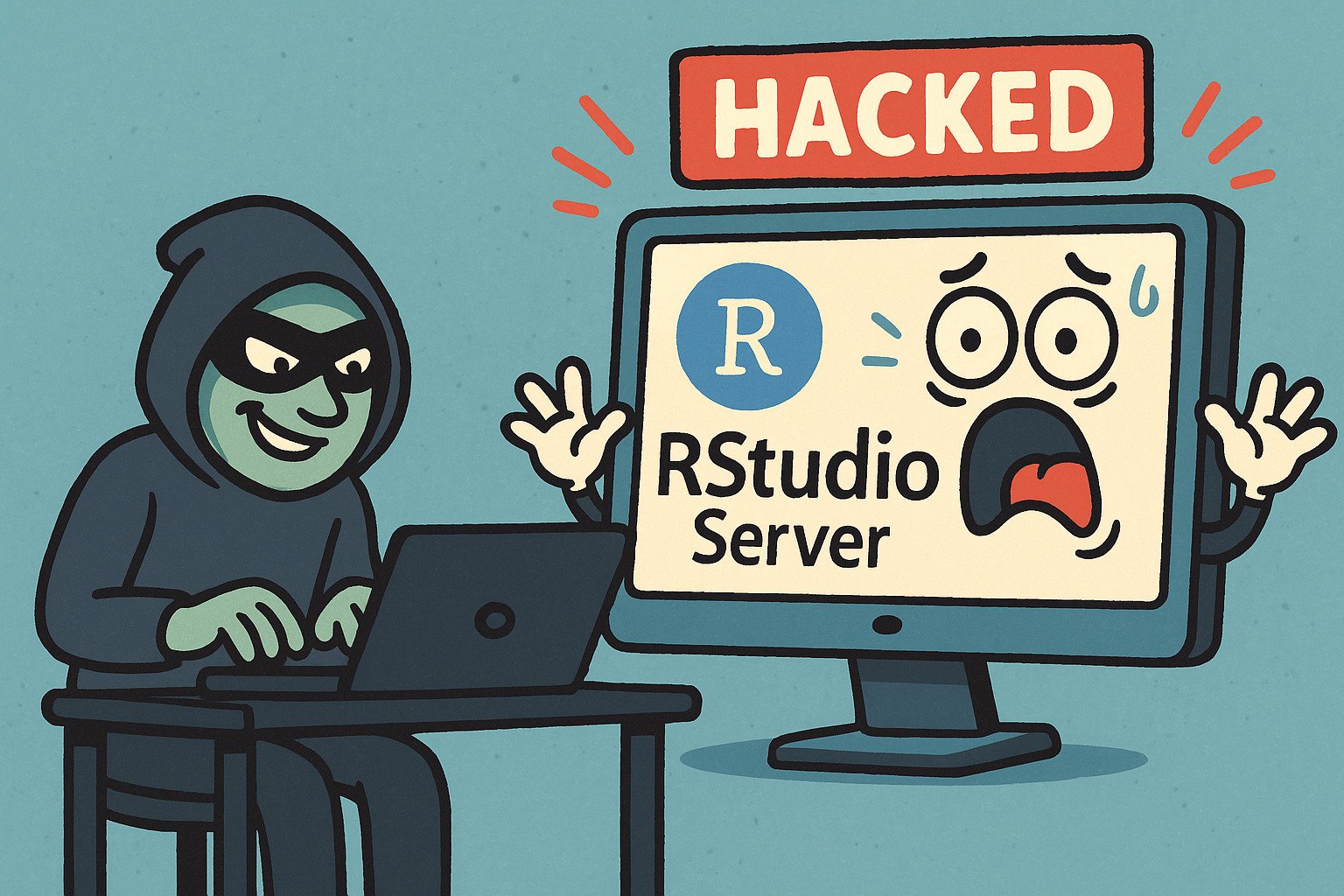RStudio Server - improved mode
Posted on April 23, 2025 • 3 minutes • 454 words
Many of the extremely useful features in RStudio Server (free) / Workbench (paid) have been disabled by Posit, likely to encourage license purchases. That’s understandable everyone needs to make a living. However, the pricing is quite high for a research center, so we’re limited to using the free version. Since it’s a Linux-based application, we’ve managed to “hack in” some features ourselves.
create a custom login page
We are using nginx as proxy, somewhat based on the admin guide of Workbench. This is basically a requirement since sending credentials over http is a no-no! We can utilisea nginx feature sub_filter in order to replace parts of the body to customize the login page.
For example:
# replace the login page only
location /auth-sign-in
{
sub_filter '<body>' '<body> some fancy help message !';
sub_filter_once on;
proxy_set_header Accept-Encoding ""; # only required if gzip compression is on
proxy_pass http://127.0.0.1:8787;
}
Using this method one could easily inject javascript or replace the entire page with a custom page.
creating a /home upon login
When users login for the first time (using sssd or winbind), it’s possible with Workbench to automatically create a /home/$user. This by levering the session in pam. At first, I couldn’t figure out why this didn’t work with the free version—turns out RStudio Server doesn’t open a PAM session at all. Since pam_oddjob_mkhomedir only works at the session level, not auth or account, we have to get creative again.
I modified /etc/pam.d/rstudio to :
#%PAM-1.0
# note: session is never actually called for RStudio (free)
auth substack password-auth
auth [success=ok new_authtok_reqd=ok ignore=ignore user_unknown=bad default=die] pam_exec.so log=/tmp/debug_create_user.log /opt/create_user.sh
account required pam_unix.so
note: since we use password-auth anything in password-auth will also work in rstudio (eg sssd or winbind)
This will execute a script /opt/create_user.sh :
#!/usr/bin/env bash
# this script gets executed as root
# during PAM authentication
# it creates the user home directory
# since RStudio doesn't execute sessions :(
# don't do for root or svenn
[ "${PAM_USER}" = "root" ] && exit 0
[ "${PAM_USER}" = "svennd" ] && exit 0
echo "User: ${PAM_USER} "
# Check if the user's home directory exists
USER_HOME="/home/AD/$PAM_USER"
# define the group the user should be part of
PAM_GROUP="1002"
if [ ! -d "$USER_HOME" ]; then
# Create the home directory if it doesn't exist
mkdir -m 0700 "$USER_HOME"
chown $PAM_USER:$PAM_GROUP "$USER_HOME"
# You can also copy skeleton files if needed
cp -ra /etc/skel/* "$USER_HOME/"
# selinux
restorecon -R -v "$USER_HOME"
fi
exit 0
Perhaps there are cleaner solutions, but this worked!
set up resource limits
Even though I didn’t do this, Jeff Stafford made a nice post about how we can set this up.
More hacks to do, let me know!
img by chatGPT

 Buy me a Dr Pepper
Buy me a Dr Pepper